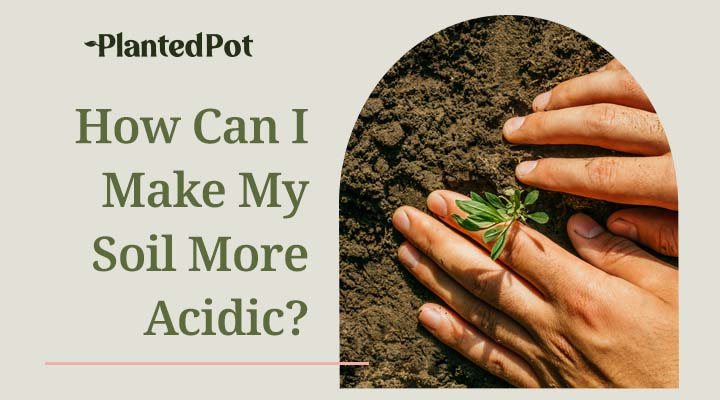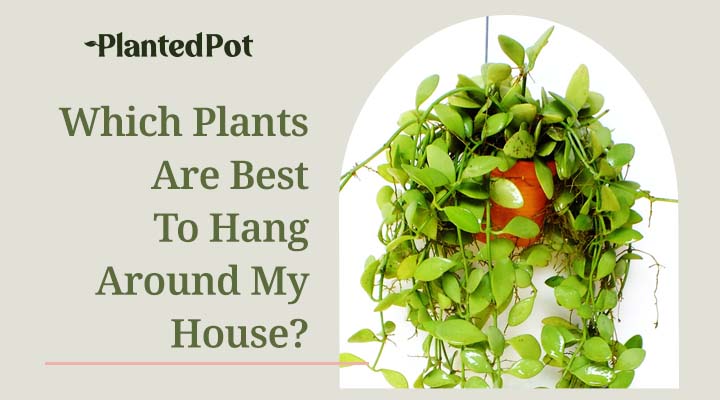
Best Time to Water Plants [And When You Shouldn’t]
Home / Best Time to Water Plants [And When You Shouldn’t]
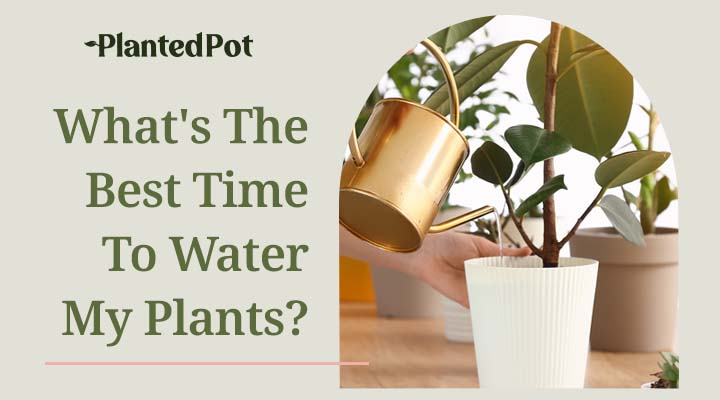
Best Time to Water Plants [And When You Shouldn’t]
- Greg Poblete
- May 4, 2021
- 12:06 am
- No Comments
Whether you are a new plant parent or a seasoned veteran, watering your plants is vital to their longevity. Of course, different types of plants require various kinds of care and attention. Since H20 is such an essential part of their health, when is the best time to water plants? You’ve come to the right place. This article will explain everything you need to know about watering plants and getting your thumbs green!
Why Is It Important to Water Plants?
Just as water and food are essential components in keeping human beings alive, water is vital for keeping plants alive. The amount and frequency of waterings may vary for each plant, but every plant species needs an occasional drink to survive. Let’s take a look at why.
Watering plants is essential because it helps provide the nutrients and sugars needed for the soil. These components help the plant grow its leaves and maintain a strong structure.
Watering plants also helps with photosynthesis. Photosynthesis is the process in which plants generate food from sunlight with the help of water and carbon dioxide. Water is the key to keep any plant thriving, whether it’s a common house plant or a towering tree.
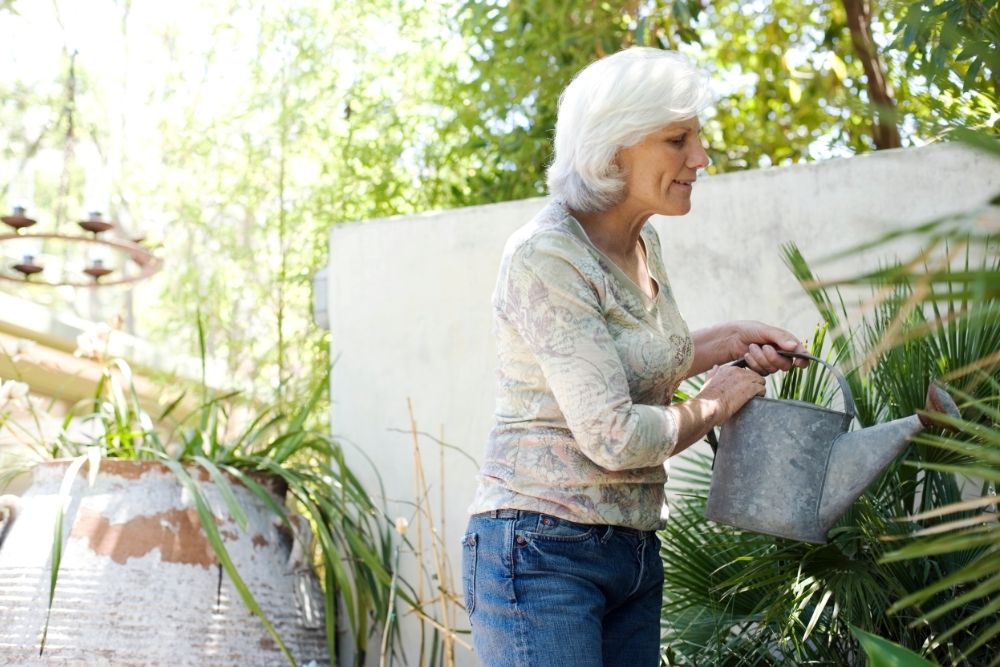
What Happens If You Don’t Water Your Plants?
If you don’t water your plants, there can be various consequences. The soil may dry up, making it difficult for the plant to absorb the nutrients it needs to survive. When a plant becomes dry, it may suffer physical deformations such as withering leaves or discoloration.
Dehydrated plants may experience dried-out roots that could eventually lead to the entire plant dying and wilting away. This could happen when the air surrounding the plant becomes excessively dry or if your region experiences a drought.
To avoid drying out your plants and causing other issues down the line, it is essential to take care of your plant properly. Giving your plants water is one of the best ways to care for them, but a good watering schedule will make your leafy green friend grow even stronger.
Does It Matter What Time of Day You Water Plants?
Yes, it matters which time of day you choose to water your plants. Although it can feel like watering plants any time of the day is all the same, there are more suitable periods than others.
However, don’t feel like you have to structure your daily schedule around your house plant. While watering your plant at certain times in the day will maximize its growth, you won’t be damaging your plant by giving it a drink at other times in the day. So, what is the best time to water plants?
Best Time to Water Plants
The best time to water plants is in the morning. Just as drinking a nice glass of water when you wake up is refreshing to the body, watering in the morning provides the same satisfaction in plants.
The morning is the best time to water your plant because it provides the most nutrients that get it through the day. When the temperature is cooler outside in the morning, less water evaporates from the plant than the warmer weather in the middle of the day.
Watering in the morning will help plants thrive for the entirety of the day, especially on a hot summer day or in areas that tend to be warmer throughout the afternoon. A key benefit to early watering is that the heat and the afternoon sun can absorb excess water from the soil to keep the plant from experiencing any fungal issues.
Watering in the afternoon can lead to plants drying out more quickly. This is because the plant is not fully absorbing the water it needs to thrive for the entire day.
Watering in the morning essentially helps the plant prepare for the rest of the day. The morning water provides the plant the chance to stash away the water needed to combat the day’s weather, no matter how warm it gets. After morning waterings, the afternoon sunlight can help dry out any leftover water in the soil. Standing water in the soil can lead to rotting or other issues.
With that being said, nighttime watering can be an alternative if the mornings are too difficult a time to schedule. But there are a few things to consider before fully committing to watering your plants at night.
Is It Bad to Water Plants at Night?
Watering your plants at night instead of the morning is not the best time for a few reasons. For one, watering at night can leave plants soaked for an extended period. This can be detrimental for your plants because it is difficult to evaporate excess water without the sun’s natural heat. Because of this extra water, the plant’s leaves can become damp, which may lead to fungal issues.
Another reason to avoid watering at night if possible is that the plant may be left soaking overnight, gathering moisture. The water can encourage rotting and attract insects or snails.
Understandably, creating a daily routine of watering your plants in the morning may be challenging to sustain. We all have lives outside of maintaining our gardens or tending to our indoor plants, and watering in the A.M. can be a nuisance.
So, to prevent drowning your plants at night, water directly to the root zone where the plant needs the water most and only give as much as needed. To avoid overwatering, focus on where the water is being placed on the plant and how much is being given.
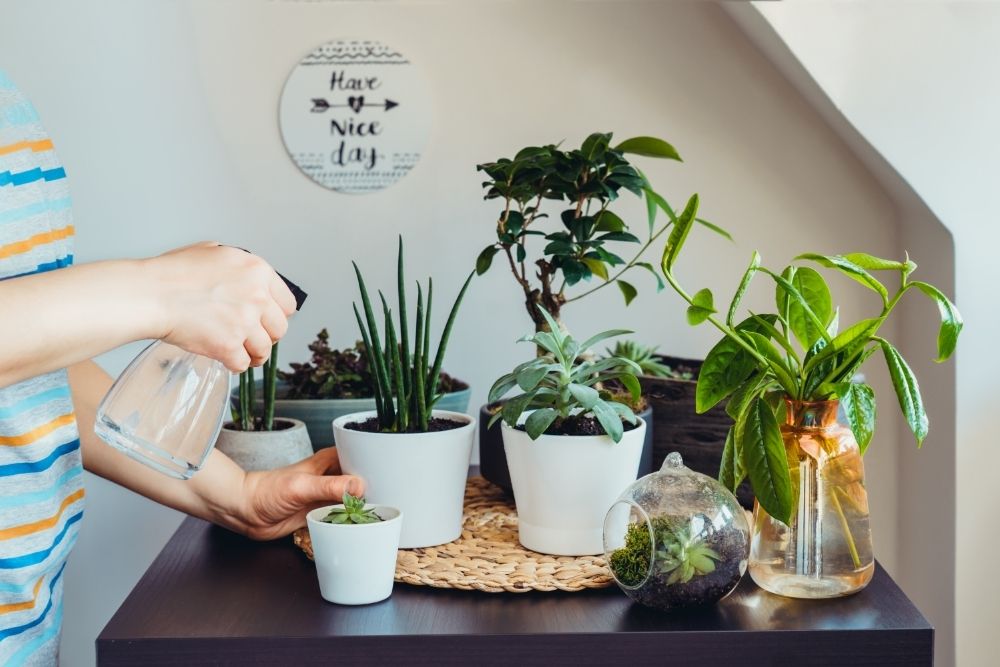
How Often Should Plants Be Watered?
The answer to this question may vary depending on the type of plant, the environment surrounding it, and weather conditions. All these components play into how much you should be watering your plants.
For example, if you have plants that are more comfortable in warmer weather, such as succulents or cacti, you may only need to water them once or twice a week. It is crucial that you are watering directly into the soil of these types of plants to make sure they get the full benefits.
If you have plants seeded deeply in the soil, watering once or twice a week may suffice as long as the soil is saturated to a depth of 6 inches. The quality of soil you are using may also be a factor in how much water is retained.
Garden plants such as vegetables require a bit more attention. They need daily waterings to avoid stunted vegetable growth. Giving your plant a healthy amount of water every day will result in the healthiest growth.
If your plant is outdoors, it is also important to know the weekly forecast to avoid overwatering on a rainy day. On the other end of the spectrum, it is crucial to know if the weather will be hot or dry so you can provide a little extra water for your plants to make it through the day.
How Do I Know If My Plant Needs Water?
Besides following weather trends and recognizing when your plants need more water to survive the heat, here are a few physical characteristics that can let you know your plant needs water.
- Wilting: A wilting plant has a limp structure and overall droopiness, which occurs when your plant is dehydrated.
- Dry soil: Placing your finger an inch or two into the soil can be an excellent way to see if your plant needs more water. This method is helpful because the soil may seem dry on the surface, but some moisture may be present when you dig beneath the surface.
- Dry/dead leaf tips: If you begin to see the leaves of your plants shrivel, dry up, or fall off entirely, this means that your plant is not receiving enough water.
- Slow growth: If you notice your plant growing at a slow rate, it could signify that it does not have a sufficient amount of water to grow.
Final Thoughts
It is best to water your plants in the morning so they can store the nutrients and sugars to thrive even on a hot summer’s day. You must be careful if you choose to water at night not to overwater, which may lead to issues for your plants.
Whether your house plant is hanging or by the window, we learned how the amount of water your plant needs to survive depends on the kind of plant and its environment. Remember that a great way to check if your plant is receiving enough water is by poking a finger into the soil and feeling for moisture.


